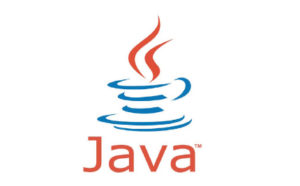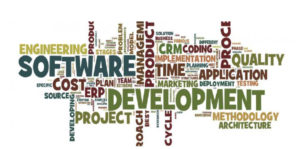- (5.0 Star)
Java Developer
Certification Training
We provide Online Instructor And Classroom Instructor led Live virtual classroom by certified trainers/ industry professionals
- Get Up to 35% discount
About Course
Java is an object-oriented language similar to C++, but simplified to eliminate language features that cause common programming errors. Java source code files (files with a .java extension) are compiled into a format called bytecode (files with a .class extension), which can then be executed by a Java interpreter. Compiled Java code can run on most computers because Java interpreters and runtime environments, known as Java Virtual Machines (VMs), exist for most operating systems, including UNIX, the Macintosh OS, and Windows
This is course which will cover core Java, advanced Java and J2ME concepts like Database connectivity, Threads, Exception Handling, Collections, JSP, Servlets, XMLHandling etc. We will also learn various Java frameworks like Hibernate, Spring, CLDC and MIDP As well as this course also cover details about oracle 11g Database Is An RDBMS. An RDBMS That Implements Object Oriented Features Such As User-Defined Types, Inheritance, And Polymorphism Is Called An Object-Relational Database Management System (ORDBMS).
Key Features
You will get 100% job Assurance and life time e-placement support
classed taken by globally certified trainers
You will get 3 year Dedicated placement support
Courses are globally recognized & accredited

Course Type:
Certification Training
Live virtual classroom:
23,999/-
29,999/-
Regular classroom:
23,999/-
29,999/-
- Duration:
6 Months
- Enrolled:
97 Learners
- Eligibility:
BCA/BSc IT/BE/B-Tech 10 / 10+2 / Graduate With programing Skill
- 5 Star:
15 Reviews
MODULE- I
Java is a general purpose, high-level programming language developed by Sun Microsystems. The small team of engineers, known as Green Team, initiated the language in 1991. Java was originally called OAK, and was designed for handheld devices and set-top boxes. Oak was unsuccessful, so in 1995 Sun changed the name to Java and modified the language to take advantage of the burgeoning World Wide Web. Java is an object-oriented language similar to C++, but simplified to eliminate language features that cause common programming errors. Java source code files (files with a .java extension) are compiled into a format called bytecode (files with a .class extension), which can then be executed by a Java interpreter. Java is object-oriented, which means that, among other characteristics, an object can take advantage of being part of a class of objects and inherit code that is common to the class. Objects are thought of as “nouns” that a user might relate to rather than the traditional procedural “verbs.” A method can be thought of as one of the object’s capabilities or behaviors.
Duration : 60 Hrs. Eligibility : Fresher 10th/10+2/Graduate with C/C++ Programming Skill
INTRODUCTION OF JAVA
- What is Java?
- How to Get Java
- A First Java Program
- Compiling and Interpreting Applications
- The JDK Directory Structure
DATA TYPES AND VARIABLES
- Primitive Datatypes ,Declarations
- Variable Names
- Numeric Literals,Character Literals
- String, String Literals
- Arrays, on-Primitive Datatypes, the Dot Operator
- Java
OPERATORS AND EXPRESSIONS
- Expressions
- Assignment Operator
- Arithmetic Operators
- Relational Operators
- Logical Operators
- Increment and Decrement Operators
- Operate-Assign Operators (+=, etc.)
- The Conditional Operator
- Operator Precedence
- Implicit Type Conversions
- The Cast Operator
CONTROL FLOW STATEMENTS
- Statements
- Conditional (if) Statements
- Data types and Variables 3
- Adding an else if
- Conditional (switch) Statements
- While and do-while Loops
- for Loops
- The continue Statement
- The break Statement
METHODS
- Methods
- Calling Methods
- Defining Methods
- Method Parameters
- Scope
- Method Parameters
- So, Why All the static?
OBJECT-ORIENTED PROGRAMMING
- Introduction to Object-Oriented Programming
- Classes and Objects
- Fields and Methods
- Encapsulation
- Access Control
- Inheritance
- Polymorphism
OBJECTS AND CLASSES
- Defining a Class
- Creating an Object
- Instance Data and Class Data
- Methods
- Constructors
- Access Modifiers
- Encapsulation
USING JAVA OBJECTS
- Printing to the Console
- Printf Format Strings
- String Builder and String Buffer
- Methods and Messages
- toString
- Parameter Passing
- Comparing and Identifying Objects, Destroying Objects
INHERITANCE IN JAVA
- Inheritance
- Inheritance in Java
- Casting
- Method Overriding
- Polymorphism
- super
- The Object Class
- PACKAGES
- The import Statement
- Static Imports
- Casting
- CLASSPATH and Import
- Defining Packages
- Package Scope
EXCEPTION HANDLING
- Exceptions Overview
- Catching Exceptions
- The finally Block
- Exception Methods
- Declaring Exceptions
- Defining and Throwing Exceptions
- Errors and Runtime Exceptions
- Assertions
INPUT/OUTPUT STREAMS
- Overview of Streams
- Bytes vs. Characters
- Converting Byte Streams to Character Streams
- File Object
- Binary Input and Output
- PrintWriter Class
- Basic and Filtered
COLLECTION FRAMEWORK
- The Collections Framework
- The Set Interface
- Set Implementation Classes
- The List Interface
- List Implementation Classes
- The Map Interface
- Map Implementation Classes
INNER CLASSES
- Inner Classes
- Member Classes
- Local Classes
- Anonymous Classes
- Instance Initializers
- Static Nested Classes
INTRODUCTION TO THREADS
- Non-Threaded Applications
- Threaded Applications
- Creating Threads
- Thread States
- Runnable Threads
- Coordinating Threads
- Interrupting Threads
- Runnable Interface, ThreadGroups
INTERFACES AND ABSTRACT CLASSES
- Separating Interface and Implementation
- UML Interfaces and Realization
- Defining Interfaces
- Implementing and Extending Interfaces
- Runnable Threads
- Abstract Classes
SERIALIZATION
- Object Serialization
- Serializable Interface
- Serialization API
- ObjectInputStream and ObjectOutputStream
- The Serialization Engine
- Transient Fields
- readObject and writeObject
- Externalizable Interface
GENERICS
- Using Generics
- Type Erasure
- Type Boundaries
- Wildcards, Generic Methods
- Strengths and Weaknesses of Generics
- Legacy Code and Generics
ANNOTATIONS
- Uses for Meta-Data
- The Annotations Model
- Annotation Types and Annotations
- Built-In Annotations
- Annotations vs. Descriptors (XML)
REFLECTION
- Uses for Meta-Data
- The Reflection API, The Class Class
- The java.lang.reflect Package
- Reading Type Information
- Navigating Inheritance Trees
- Dynamic Instantiation, Dynamic Invocation
- Reflecting on Generics
ERROR HANDLING
- Error handling strategies
- return values vs exceptions
- Basic Exception Handling
- try/catch/finally/throw
- Debugging
REMOTE METHOD INVOCATION (RMI)
- Introduction
- RMI Architecture
- The Remote Interface
- The Remote Object
- Writing the Server
- The RMI Compiler
- Writing the Client
- Remote Method Arguments and Return Values
- Dynamic Loading of Stub Classes
- Remote RMI Client Example
- Running the Remote RMI Client Example
- JDBC
- Database basics
- SQL, MySQL, PostgreSQL-Introduction and overview
- What Is the JDBC API?
- Driver Types
- Two-tier and Three-tier Models
- Connection Overview
- Transactions
- DriverManager Overview
- Statement Overview
- Sending Batch Updates
- ResultSet Overview
- Types of Result Sets
- Concurrency Types
- PreparedStatement Overview
- CallableStatement Overview
- ResultSetMetaData, Scrollable ResultSet,
- Prepared Statement, Callable Statement
- Performing Batch Update.

J2EE (Java 2 Platform, Enterprise Edition) is a Java platform designed for the mainframe-scale computing typical of large enterprises. Sun Microsystems (together with industry partners such as IBM) designed J2EE to simplify application development in a thin client tiered environment. J2EE simplifies application development and decreases the need for programming and programmer training by creating standardized, reusable modular components and by enabling the tier to handle many aspects of programming automatically. It full support is included for Enterprise JavaBeans. EJB is a server-based technology for the delivery of program components in an enterprise environment. It supports the Extensible Markup Language (XML) and has enhanced deployment and security features. Java Server Pages (JSP) is the Java equivalent to Microsoft’s Active Server Pages (ASP) and is used for dynamic Web-enabled data access and manipulation.
Duration : 60 Hrs. Eligibility : Fresher 10th/10+2/Graduate with Java Programming Skill
I NTRODUCTION TO ENTERPRISE EDITION
- Distributed Multitier Applications
- J2EE Containers
- Web Services Support
- Packaging Applications
- J2EE 1.4 APIs
WEB SERVER AND APPLICATION SERVER
- Tomcat-Introduction
- Overview, installation, Configuring Tomcat
- Jboss server-Introduction
- Overview,installation and Configuration
- Comparison
ANT TOOL
- Basics and introductions,
- Building web applications
- Using Ant Tool
JAVA SERVLET TECHNOLOGY
- What is Web Application?
- What Is a Servlet?
- Servlet Life Cycle
- Sharing Information
- Using Scope Objects
- Controlling Concurrent Access
- Getting Information from Requests
- Constructing Responses
- Filtering Requests and Responses
- Programming Filters
- Customized Requests and Responses
- Specifying Filter Mappings
- Invoking Other Web Resources
- Including Other Resources in
- The Response
- Transferring Control
- Accessing the Web Context
- Maintaining Client State
- Session Management
- Session Tracking
- Tracking Service Requests
- Notifying Methods to Shut Down
- Creating Polite Long-Running Methods
JSP TECHNOLOGY
- JavaServer Pages Technology
- The Life Cycle of a JSP Page
- Translation and Compilation
- Creating Static Content
- Response and Page Encoding
- Creating Dynamic Content
- Using Objects within JSP Pages
- Expression Language
- Deactivating Expression Evaluation
- Implicit Objects
- Literals & Operators
- Reserved Words
- JavaBeans Components
- Reusing Content in JSP Pages
- Transferring Control
- Jsp: param Element
- Including an Applet
- Setting Properties for
- Groups of JSP Pages
- JSP scripting elements and directives-,
- Declarations, expressions, directives
- Java
- Scriplets, comments,actions,implicite
- JSP objects – Working with variable
- Scopes – page scope, request scope,
- Session scope, application scope- Using
- Java beens,custom tags, Declare Default
- Content Type, Set Default Buffer Size,
- JSTL,Expression Language
CUSTOM TAGS IN JSP PAGES
- What Is a Custom Tag?
- Types of Tags
- Tags with Attributes
- Tags with Bodies
- Tags That Define Variables
- Communication between Tags
- Tag Library Descriptors
- Declaring Tag Files
- Declaring Tag Handlers
- Declaring Tag Attributes for
- Tag Handlers
- Declaring Tag Variables for Tag Handlers
- Programming Simple Tag Handlers
- Including Tag Handlers in
- Web Applications
- Cooperating Tags
JAVA DATABASE CONNECTIVITY (JDBC)
- Introduction
- Relational Databases
- Structured Query Language
- A Sample Program
- Transactions
- Meta Data
- AJAX
- Introduction to AJAX
- AJAX Components
- HTML & CSS, JavaScript & DOM
- XMLHttpRequest
- Server Side Code
- AJAX – JSP Application
- Ajax with Servlet and JSP
- XML and JSON for Ajax
- Database Application with Ajax
- Ajax libraries and Toolkits
- XML
- Markup Languages
- Why XML?
- DTD
- XML & XSL
- XML Schemas
- XML Parsers
- Reply, Forward & Delete Mails
- STRUTS
- Introduction
- Features and Architecture
- The MVC Design Pattern
- System State and Business Logic
- JSP Pages and Presentation Components
- ActionServlet and ActionMapping
- Struts Control Flow
- Building Model Components
- ActionForm Beans
- Forms and FormBean Interactions
- Automatic Form Validation
- Building Controller Components
- The ActionServlet
- ActionForm Classes & Action Classes
- The ActionMapping Implementation
- The Struts Configuration File
- Controller Configuration
- Module Configuration Files
- Add Struts Components To Your Application
- Validations Using Struts 2 Annotations
- Struts 2 with MySQL Database
- Struts 2 with AJAX , struts tags, Tiles Logging in Struts Applications
JAVA SERVER FACES
- Introduction to JSF
- JSF Features
- JSF for Web Application
- JSF components
- JSF Tags, Life Cycle & Architecture
- JSF Renderers
- JSF HTML Tag Reference
- JSF Core Tag Reference
- JSF Facelet Tag Reference
- JSF Navigation, JSF with Ajax
- Using JSF in JSP,JSF with Ajax
- Richfaces
- Apache My faces
HIBERNATE
- Introduction to O-R Mapping
- Hibernate Basics
- Hibernate Architecture
- Hibernate Configurations
- POJO (Plain Old Java Classes) classesand O/R Mapping
- Object Identifier
- One-to-One Association
- One-to-Many Association
- Many-to-One Association
- Many-to-Many Association
- Collection Mapping
- Component Mapping
- Inheritance Mapping
- Hibernate Query Language
- Criteria Queries
- Hibernate in Web Application
SPRING
- Introduction
- Spring Core
- Dependency Injuction
- Aspect Oriented Programming
- Major concepts in Spring
- Spring Architecture
- Spring web MVC
- Installation Procedure
- Spring in Web Application
- Bean descriptor
- Spring and Struts
- Spring data access
- Spring using Hibernate

J2ME (Java 2 Platform, Micro Edition) is a technology that allows programmers to use the Java programming language and related tools to develop programs for mobile wireless information devices such as cellular phones and personal digital assistants (PDAs). J2ME consists of programming specifications and a special virtual machine, the K Virtual Machine, that allows a J2ME-encoded program to run in the mobile device.There are two programming specifications: Connected, Limited Device Configuration (CLDC) and the Mobile Information Device Profile (MIDP). CLDC lays out the application program interface (API) and virtual machine features needed to support mobile devices. MIDP adds to the CLDC the user interface, networking, and messaging details needed to interface with mobile devices. MIDP includes the idea of a midlet, a small Java application similar to an applet but one that conforms with CLDC and MIDP and is intended for mobile devices.
Duration : 30 Hrs. Eligibility : Fresher 10th/10+2/Graduate with C/C++/Java Programming Skill
JAVA LANGUAGE
- Java Virtual Machine and bytecode
- Classes, source, and compilers
- Class files, loaders and compilers
- Object orientation
- Classes and instances
- Object Oriented techniques
- Classes and Objects
- Abstract classes
- Interfaces
- Polymorphism
- Dynamic dispatch
- Error handling
- Using inner classes
STANDARD LIBRARIES
- Storing data in Java
- Collections
- Hashtable and HashMap
- Vector and List
- Collections in Java 2
- I/O Programming
- GUI Programming
- AWT
- Swing
- J2ME SPECIFICS
- J2ME components: KVM, CLDC, MIDP
- Personal Java
- Overview of profile system Architecture
- J2ME language differences
- Developing Midlets
- Testing code
- Comparison of different ME platforms
- Differences between J2ME environments
- MIDP 2.0
- Storing data in Java
- Collections
- Hashtable and HashMap
- Vector and List
- Collections in Java 2
- I/O Programming
- GUI Programming
- AWT
- Swing
STANDARD LIBRARIES
- Mobile information device profile
- Creating MIDP applications
- Midlet suites
- Midlet deployment
- MIDP 2.0 GUI
- Graphical User Interfaces with MIDP
- Displays, Commands, Pointers, Screens
- Animations and drawing
THREADING AND SYNCHRONISATION
- Threading
- Creating Threads in Java
- Synchronisation
J2ME CAPABILITIES
- Streamed IO
- Socket IO (TCP/IP)
- J2ME IO
- Networking with HTTP
- Persisting data on portable devices – JSR 75
CONNECTIVITY
- SMS
- Bluetooth
- IrDA – Infrared Data Adapter
- Networking
- Push Registry
- APIS
- MMAPI – JSR 135
- SIPAPI – JSR 180
- Game API
Oracle Database is an RDBMS. An RDBMS that implements objectoriented features such as user-defined types, inheritance, and polymorphism is called an object-relational database management system (ORDBMS). Oracle Database has extended the relational model to an object-relational model, making it possible to store complex business models in a relational database. Relational database management system (RDBMS). Essentially, an RDBMS moves data into a database, stores the data, and retrieves it so that it can be manipulated by applications. Oracle 11gVersion 11g of the Oracle Database, which included built-in testing for changes, the capability of viewing tables back in time, superior compression of all types of data and enhanced disaster recovery functions. The “g” stood for “grid computing,” which supports clusters of servers that are treated as a single unit. See Oracle Database.
Duration : 40 Hrs. Eligibility : Fresher 10th/10+2/Graduate with Java Programming Skill
INTRODUCTION TO ORACLE 11G TECHNOLOGY
DATABASE INSTALLATION AND ADMINISTRATION
- Assessing the Oracle database architecture
- Managing Oracle databases
ACCESSING AND MANIPULATING DATA
- Retrieving data efficiently with SQL Developer
- Applying powerful SQL techniques
- Modifying data with SQL statements
CREATING AND MANAGING DATABASE OBJECTS
- Implementing the physical design
- Constructing and maintaining tables
- Building views, sequences and synonyms
MAINTAINING INTEGRITY, SECURITY AND PERFORMANCE
- Enforcing integrity
- Securing the data
- Improving performance
PROGRAMMING WITH PL/SQL
- Writing basic programs
- Processing data with cursors
IMPLEMENTING SERVER-SIDE LOGIC
- Modularizing code
- Creating packages and triggers

Sent Us a Message

